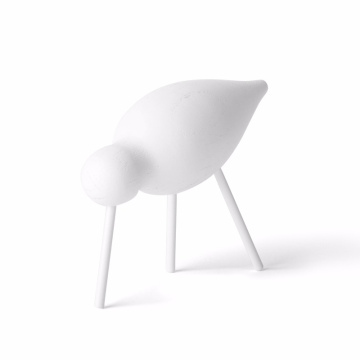A Culinary Adventure: Enjoying the Delight of Kung Pao Chicken
The Origin of Kung Pao Chicken
Kung Pao Chicken, an iconic dish renowned for its unique blend of flavors, has a rich history deeply rooted in Chinese culinary traditions, particularly in the Sichuan province. This celebrated dish originated in the late Qing Dynasty, when it was named after a prominent official, Ding Baozhen, who held the title "Kung Pao," meaning "Palace Guardian." As a high-ranking figure in the province, Ding Baozhen was known for both his administrative skills and his appreciation for the local cuisine. It is believed that he favored this spicy stir-fried chicken dish, which subsequently gained recognition and was named in his honor.
Traditional preparations of Kung Pao Chicken are marked by distinctive ingredients, which reflect the rich agricultural heritage of Sichuan. The essential components typically include chicken, peanuts, scallions, and a variety of spices, with Sichuan peppercorns adding a characteristic numbing heat. The cooking method, involving a quick stir-fry technique, preserves the chicken's tenderness while allowing the flavors to meld harmoniously. Over time, the dish has undergone numerous variations, incorporating localized ingredients and preferences, yet the core elements have remained intact.
As culinary exchanges and migration patterns evolved, Kung Pao Chicken transcended geographical boundaries, eventually making its way to Western palates. It became widely popular in Chinese restaurants around the globe, often adapted to cater to diverse tastes, occasionally substituting or omitting traditional components such as the spicy elements or peanuts. Despite these variations, the essence of Kung Pao Chicken as an emblem of Sichuan cuisine continues to captivate food enthusiasts. Its fascinating origin story reflects not only the flavors of this beloved dish but also the cultural history of China itself.
The Essential Ingredients and Preparation
To create an authentic Kung Pao Chicken, one must start with a selection of essential ingredients that contribute both flavor and texture. The cornerstone of the dish is, of course, the chicken. Traditionally, boneless, skinless chicken thighs are preferred for their tender and juicy characteristics. However, chicken breasts can also be used for a leaner option. The next critical component is roasted peanuts, which add a crunchy element that balances the tender meat. For a truly authentic taste, using unsalted peanuts is recommended as they allow the other flavors to stand out.
The flavor profile of Kung Pao Chicken is significantly enhanced by the inclusion of various spices and seasonings. The star among these is Sichuan peppercorns, known for their unique numbing heat. Along with these, ingredients such as soy sauce, rice vinegar, and sugar are essential; they create a well-rounded base for the sauce. Additionally, garlic and ginger provide aromatic depth, while green onions, often used as a garnish, add a fresh crunch.
The preparation of Kung Pao Chicken involves several key steps to ensure the flavors meld harmoniously. Begin by marinating the chicken in a mixture of soy sauce, rice wine, and cornstarch for at least 30 minutes. This not only imparts flavor but also helps in tenderizing the meat. Once marinated, the chicken should be stir-fried over high heat in a wok or a heavy skillet until golden brown. After removing the chicken, the next step is to sauté garlic, ginger, and Sichuan peppercorns, allowing their fragrant oils to infuse the oil. Subsequently, return the chicken to the pan, add the roasted peanuts, and toss everything with the sauce until well-coated. This method ensures that each ingredient retains its integrity while contributing to a delightful culinary experience.
Experiencing Kung Pao Chicken in Local Restaurants
When it comes to enjoying Kung Pao Chicken, selecting the right dining establishment plays a crucial role in ensuring an authentic experience. Kung Pao Chicken, known for its bold flavors and delightful texture, is best enjoyed in a restaurant that prioritizes traditional Chinese cooking. To find such establishments, consider seeking recommendations from locals or culinary enthusiasts who can guide you to hidden gems that serve quality dishes.
When perusing the menu of a potential restaurant, look for specific indicators of authenticity. A diverse selection of Chinese dishes accompanied by detailed descriptions can suggest the restaurant's commitment to quality. Additionally, if the menu includes regional specialties from Sichuan – the birthplace of Kung Pao Chicken – it is a strong indication that the restaurant has a genuine focus on classic Chinese cuisine. The presence of Sichuan peppercorns or chili oil in the dishes can also enhance your Kung Pao Chicken experience, as these ingredients are fundamental to the dish's flavor profile.
Moreover, the atmosphere and ambiance of the restaurant contribute significantly to enjoying your meal. A well-decorated space with traditional Chinese artwork, comfortable seating, and a peaceful environment can provide an immersive experience. It's often said that enjoying food in a pleasant and culturally resonant setting can elevate the overall dining experience. Consider visiting during peak hours to witness the bustling energy of the restaurant, which may add to the authenticity of your meal.
Based on personal experiences, exploring local Chinese eateries or dining at well-reviewed establishments can lead to impressive Kung Pao Chicken encounters. Whether it is a small family-run restaurant or a more upscale venue, finding the right place to indulge in this classic dish will surely enhance your culinary adventure. Embrace the journey, as each restaurant can offer a unique twist on this beloved recipe.
Cooking Kung Pao Chicken at Home
Recreating Kung Pao Chicken in your own kitchen is a delightful culinary adventure that is accessible for home cooks of all skill levels. This iconic dish, known for its bold flavors and satisfying textures, can easily be tailored to meet personal preferences, including vegetarian variations that maintain the essence of the original. Below is a step-by-step guide along with essential tips for crafting this savory dish.
To begin, gather the following ingredients: boneless chicken breast (or tofu for a vegetarian option), peanuts, green bell peppers, dried red chilies, and scallions. Additionally, you will need garlic, ginger, soy sauce, rice vinegar, sugar, and cornstarch for the sauce. Start by marinating the chicken or tofu in a mixture of soy sauce, cornstarch, and a splash of rice vinegar for approximately 15 minutes. This helps to tenderize the protein and enhances its flavor.
While the protein is marinating, prepare the sauce by combining soy sauce, sugar, and vinegar in a small bowl. This sauce is crucial, as it enhances the dish's signature flavor profile. After marination, heat a wok or large skillet over medium-high heat. Add oil and, once hot, introduce the marinated chicken or tofu, stirring constantly to achieve an even cook.
Once the protein is browned, incorporate the garlic, ginger, and dried red chilies into the wok, stirring for an additional minute to release their aromas. Next, add the bell peppers and peanuts, tossing everything together to ensure even coating with the sauce. Allow the dish to cook for about 2-3 minutes until vegetables are tender yet crisp.
As with any recipe, adaptability is key. Feel free to experiment with other vegetables such as broccoli or carrots, and adjust the spice level by increasing or decreasing the number of dried chilies. This freedom empowers you to create a personalized version of Kung Pao Chicken that suits your taste while honoring the dish’s tradition. With practice, your home-made Kung Pao Chicken can become a favorite in your household.





